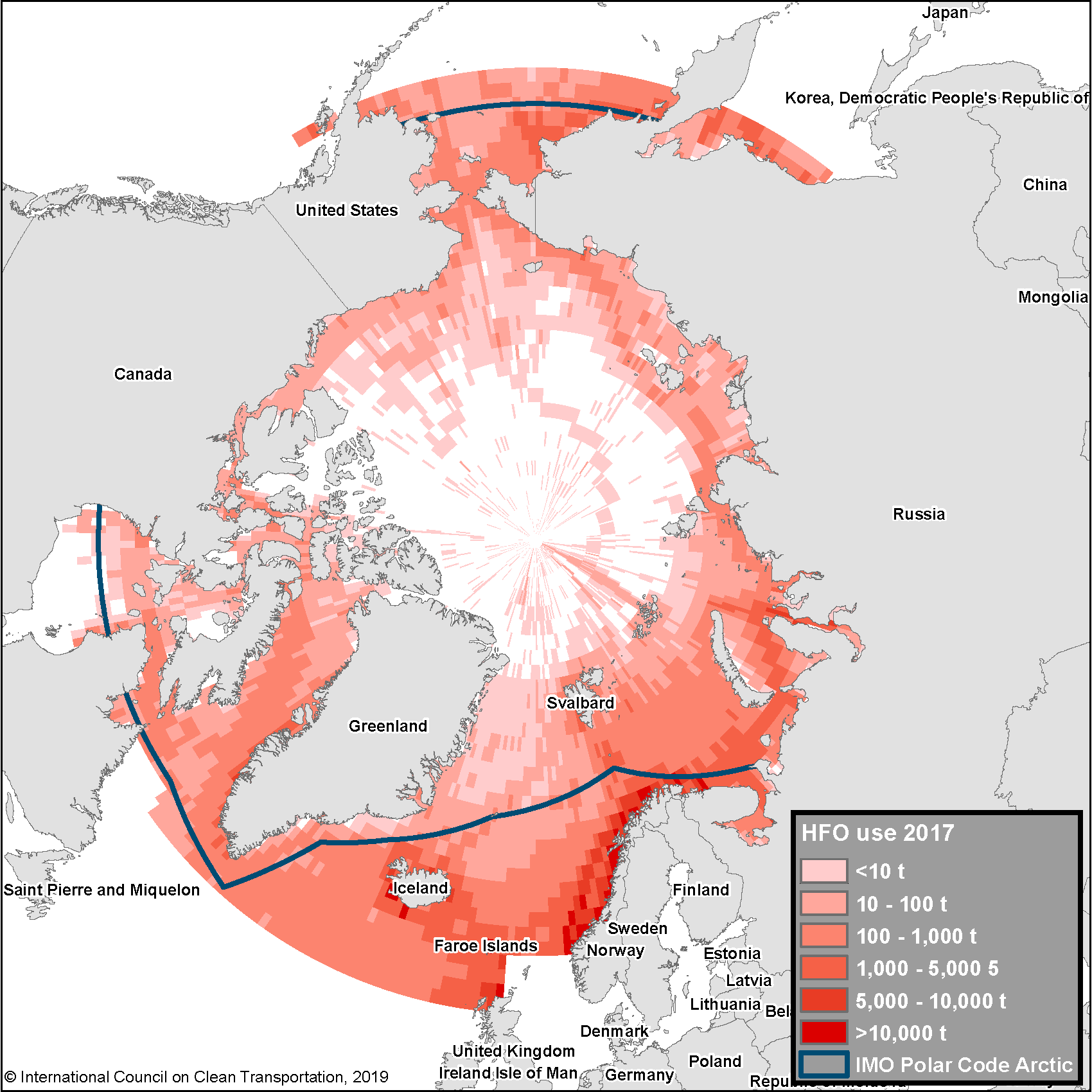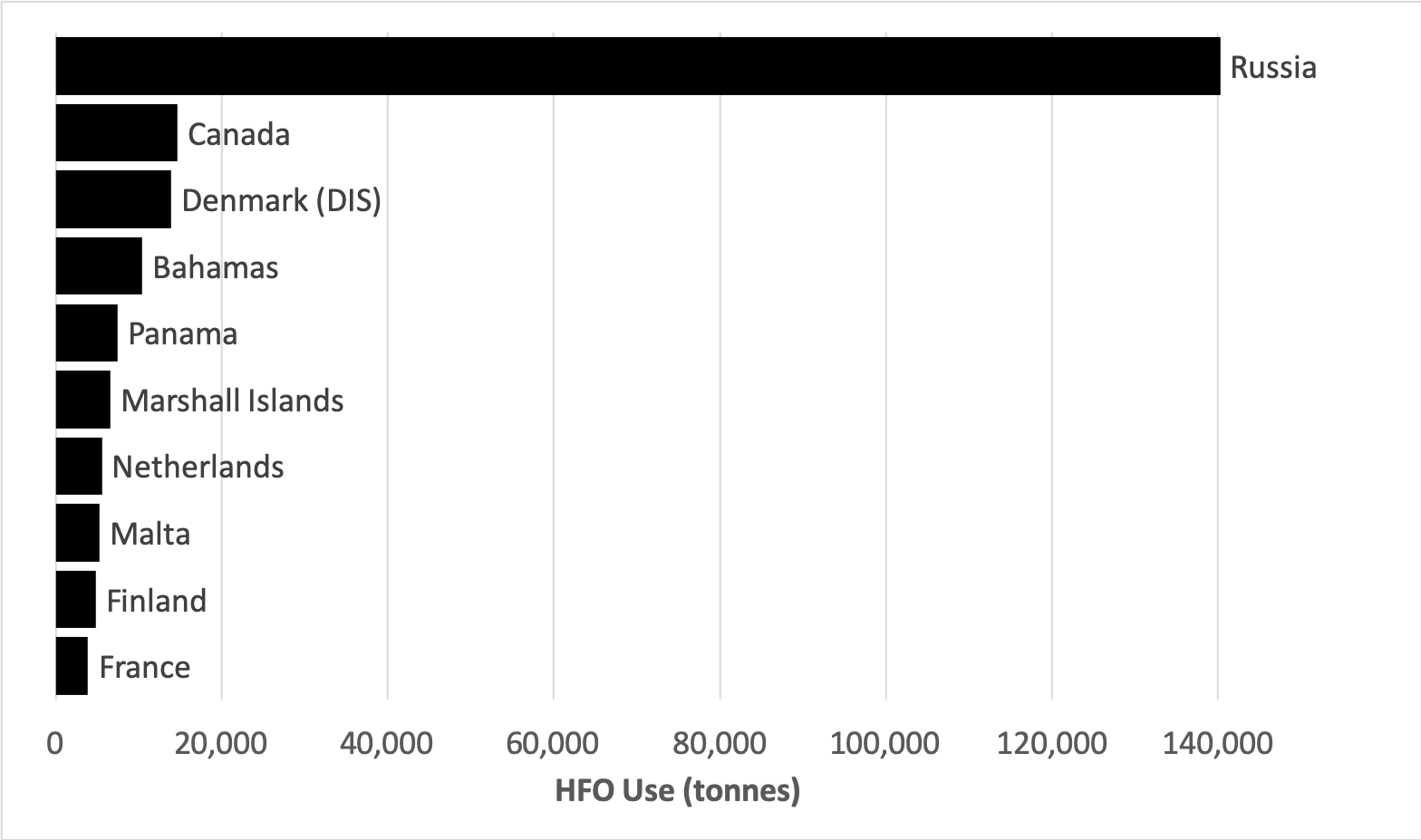Blog
IMO’s draft HFO “ban” is nothing of the sort
Last week’s meeting of the International Maritime Organization’s (IMO) 7th annual Pollution Prevention and Response (PPR) subcommittee was billed as an “Arctic Summit,” and judging by the draft language to ban the use and carriage for use of heavy fuel oil (HFO) by ships in Arctic waters that resulted, the meeting was, in many ways, chilling. The ban is slated to begin to apply to some ships on July 1, 2024, but also contains exemptions and waivers for many ships that would exclude them until July 1, 2029. IMO member states had an opportunity to take decisive action to protect the Arctic from the risks of HFO, but by failing to consider the impact of the exemptions and waivers, they largely missed the mark. And as I’ll explain, these impacts are likely to be significant.
The first thing to understand is that HFO has been banned in the Antarctic since 2011. Ships aren’t allowed to use or carry HFO there, and HFO cannot be carried as cargo or ballast, either. This comprehensive ban is meant to protect the Antarctic from spills. An additional benefit is that using other fuels, like distillates, emits fewer climate-warming and ice-melting black carbon particles than HFO. Meanwhile, in the Arctic, HFO cargoes will still be allowed indefinitely. This was a concession negotiators made early on to bolster support for the Arctic HFO ban.
The IMO also has a somewhat unusual definition of Arctic waters that excludes the coasts of Iceland and Norway because those areas have less seasonal ice cover. But there are ecological reasons why these areas could have been included, and there is considerable HFO use in those excluded areas. Nonetheless, as shown in Figure 1, ships still used nearly 400,000 tonnes of HFO within IMO’s narrowly defined Arctic waters in 2017. And even setting aside the boundary issue, there are two loopholes in the language agreed upon last week that make the HFO “ban” anything but: (1) a five-year exemption for ships with protected fuel tanks and (2) waivers for Arctic-flagged ships.

Loophole #1: Five-year exemption
Prior to the meeting, a group of 11 countries, led by the United States, proposed a delay of five years, from July 2024 to July 2029, for ships that comply with certain IMO regulations; one is a directive that requires ships delivered on or after August 1, 2010, which have fuel capacities greater than or equal to 600 cubic meters to protect their fuel tanks by ensuring there is a gap of at least 76 centimeters between the fuel tank and the outer hull of the ship. This separation is meant to reduce, but not eliminate, the risk of fuel spills. The draft text from PPR 7 indeed specifies that those ships can keep using and carrying HFO as fuel until July 1, 2029. Based on 2015 ship traffic used in an earlier ICCT study on HFO, this loophole alone excludes at least 33% of the HFO used and 40% of the HFO carried on ships from the ban. Additionally, as I’ll explain below, the amount of HFO exempted will certainly be larger by 2029 than in 2024.
Loophole #2: Waivers for Arctic-flagged ships
During the meeting, negotiators also accepted Russia’s proposal to allow countries to waive the requirements for ships that fly an Arctic flag, i.e., the flag of a country with a coastline that borders Arctic waters, “while operating in waters subject to the sovereignty or jurisdiction” of that country. The waivers could be granted until July 1, 2029. Because of the definition of Arctic waters, Russia, Canada, the United States (because of Alaska), Denmark (because of Greenland), and Norway (because of Svalbard) would all be able to issue waivers, and, for now at least, Iceland would not be able to grant them. As long as a ship is inside the territorial waters or the Exclusive Economic Zone of its flag state, it would not be subject to the ban until July 1, 2029. This provision is especially beneficial for Russia. As shown in Figure 2, Russian-flagged ships use more HFO in the Arctic than ships from other countries by a wide margin.

Accounting for the exemptions and assuming that Russia and other Arctic states liberally grant waivers, which seems likely enough since they asked for or supported them, the “ban” would allow the majority of HFO used and carried by ships to persist in the Arctic until July 1, 2029. Even worse, as time goes on, more and more HFO will be excluded from the ban. First, as the fleet turns over, more ships in the Arctic will have the protected fuel tanks that qualify them for exemption until July 2029.
Second, shipowners can re-flag their ship to an Arctic country. A Chinese-flagged ship that wanted to transit Russia’s Northern Sea Route on its way from Shanghai to Rotterdam could simply reflag to Russia. Then it would be allowed to use HFO in the Arctic as long as it stays in waters “subject to the sovereignty or jurisdiction” of Russia, which would cover its entire 3,000 nautical mile Arctic journey.
Third, as ship traffic increases, the amount of HFO used and carried in the Arctic will grow. As I showed in a presentation to PPR 6, between 2015 and 2017 alone, HFO carriage increased 46% and HFO use increased 57%. The largest increases were due to oil tankers transporting crude between Russia and Europe along the Russian and Norwegian coasts. Additionally, the IMO’s global sulfur limit, which took effect January 1, 2020, is likely to increase the use of very low sulfur fuel oil, which we assume would meet the definition of HFO by viscosity or density.
As you can see, these loopholes offer little protection for the Arctic over the next decade. What worries me most is that IMO member states insisted that all impacts—positive and negative—be considered when developing the ban, but then inserted these loopholes without seriously considering their impacts.
Still, there is one more chance to change course. The ICCT is now quantifying the impacts of these exemptions and waivers on HFO use and carriage based on actual 2019 ship traffic, with projections to 2024 and 2029. We will submit this analysis to the 76th meeting of IMO’s Marine Environment Protection Committee, set for October, and that is the last opportunity for countries to change the draft ban language before adopting it. Member states and others who care about protecting the Arctic should carefully consider our results.
Eliminating the exemptions and waivers would not afford the Arctic the same protections as the Antarctic, because cargoes would still be allowed, but it would at least protect against HFO spills and immediately lower black carbon emissions. Come the fall, let’s hope that member states reconsider the draft language and insist on an HFO ban without exemptions and without waivers. Otherwise, the so-called HFO ban will be nothing of the sort.
